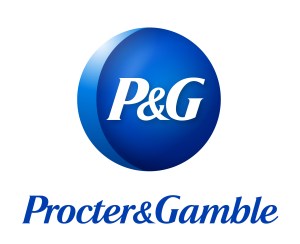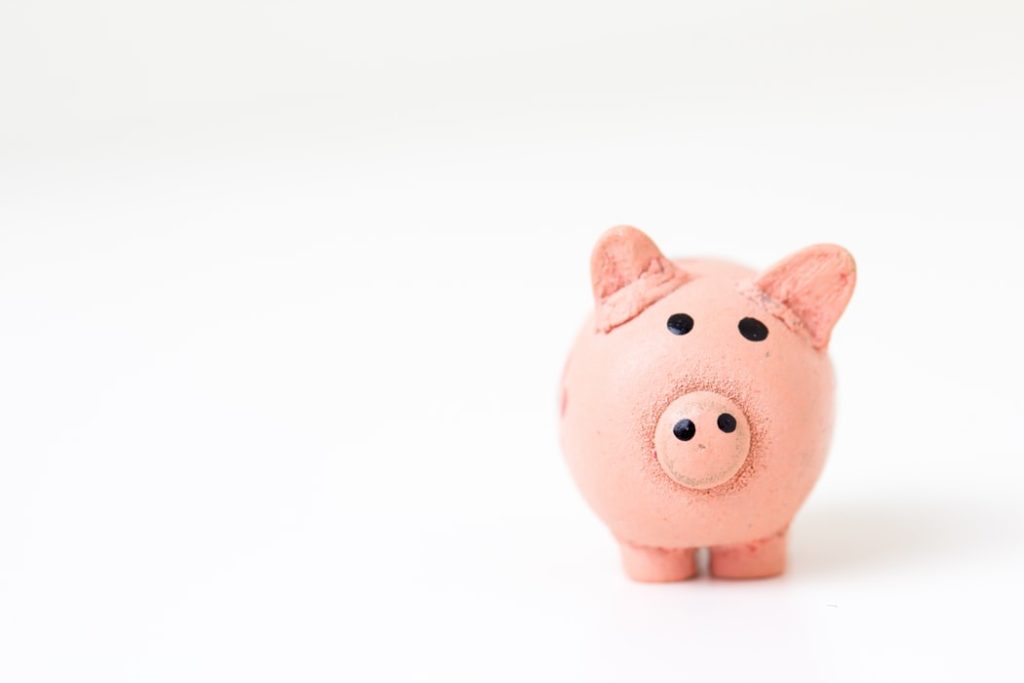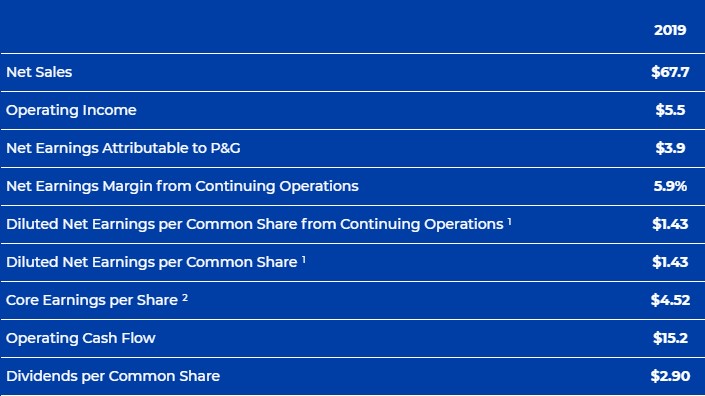WE ARE CURRENTLY OPERATIONAL – Updated [datetoday]
As the onset of the global Coronavirus pandemic continues to affect us all, we at That! Company want to take a moment to update you on the steps we’re taking to safely and continually serve your White Label Digital Marketing needs.
Presently, we are monitoring the COVID-19 situation extremely closely. That! Company’s team is adhering to the strict guidelines set forth by the CDC to help efficiently maintain our high service standards.
We will continue to operate as usual and have implemented increased communication among our team and customers to maintain constant updates and share reliable information. In almost all situations our team is operating remotely from our offices utilizing technology to stay completely operational.
As the leading white label search engine optimization company, we help agencies world-wide deliver outstanding SEO results for their end clients. Can we help you? Learn more about our White Label SEO Services to learn how we help you achieve the desired outcomes fro your clients today.
Consultations and client teleconferences are expected to continue normally until further notice, and any change in these processes will be communicated quickly with you.
We are all experiencing these same challenging and unsure times, but we can also be confident that we will get through it with cooperation, patience, and minimal business interruption.
Thank you for your loyalty, understanding and trust in That! Company
The Choice You Make Could Elevate Your Business or Kill It
These are certainly scary economic times. COVID-19 will definitely cause the global economy, not to mention the US economy, to falter. But how you behave right now, the choices you make about your response to this are going to make or break your future. What’s it going to be?
Are you getting ready to cut back your advertising budget? Hunker down and ride this out? It’s an option, but perhaps you ought to look at what one company did in arguably the WORST financial meltdown in United States history: The Great Depression.
Procter and Gamble
 The Great Depression was exceptionally difficult for most consumer product companies, but Procter and Gamble came out of the entire meltdown a whole lot stronger than it was in 1929. How did the soap giant beat the Great Depression? Things were rough at first when most of their mainstay grocery customers started cutting their orders and P&G’s resulting inventories piled up. P&G’s leadership determined that even in a depression people would still need soap, why wouldn’t they buy it from Procter and Gamble?
The Great Depression was exceptionally difficult for most consumer product companies, but Procter and Gamble came out of the entire meltdown a whole lot stronger than it was in 1929. How did the soap giant beat the Great Depression? Things were rough at first when most of their mainstay grocery customers started cutting their orders and P&G’s resulting inventories piled up. P&G’s leadership determined that even in a depression people would still need soap, why wouldn’t they buy it from Procter and Gamble?
Thus, instead of cutting back their advertising efforts to cut costs (as many of its competitors did), the company actively pursued new marketing channels, which at the time included the then rising commercial radio broadcasts. It was able to maintain and increase sales while other companies folded. One of these campaigns involved becoming the chief sponsor of daytime serial dramas aimed at housewives, the company’s primary market.
Creating a Marketing Opportunity
P&G was one of the first companies to sponsor daytime serial dramas on the radio in the 1930s to advertise their products to housewives. The shows were associated with sponsors such as P&G’s Oxydol, Duz, and Ivory soaps and were dubbed “soap operas.”
In 1933 P&G debuted its first serial, Oxydol’s Own Ma Perkins, and housewives around the country quickly fell in love with the daily stories. The program was so successful that P&G started actively creating similar daily serial dramas to bolster its other brands, and by 1939, the company was producing 21 of these so-called “soap operas.”
P&G sponsored numerous other radio shows, including Perry Mason, The Red Skelton Show, Truth or Consequences, The Road of Life, Dreft Star Playhouse and Against the Storm, the only radio drama to win a Peabody Award.
Their most successful production was The Guiding Light, a soap opera created by Irna Phillips in 1937, and sponsored by P&G White Naphtha Soap. The series transitioned to television in 1952 and continued to also be broadcast on radio until 1956.
What began as a small family-run candle and soap business, grew through innovation, creative marketing, and partnerships to become the largest consumer goods company in the world.
2019 Procter and Gamble Annual Report Showing $67.7 Billion in Net Sales
Why You Should Do the Same Thing in Today’s Market as P&G Did Then
We’re going to break down for you the top reasons you should double down—maybe even triple or quadruple down—on your marketing efforts right now, where you should focus your effort (Spoiler Alert; It’s Digital), and how you might even consider paying for it. We’ll walk through the Risk vs. Reward and give you some actionable items you should start on right now.
The Digital Market Just Got a Whole Lot Bigger
That’s not possible! There aren’t any more people today than there was yesterday; how could it have possibly grown?
Simple. With hundreds of thousands of people furloughed from work or working remotely, and so many live entertainment opportunities being shut down, the number of hours people spend online is already increasing. They can’t go to bars and they can’t gather in large groups. This will skyrocket in the coming weeks. If you want eyeballs, digital is the place to be right now. People are stuck at home and you can reach them better than you ever could.
Less Competition = Lower Marketing Costs
 We can guarantee that many of your competitors will probably stop marketing out of fear and uncertainty. You’re considering the same thing, aren’t you? Yet this will become a great time to get cheaper paid traffic, make gains in SEO while others are pausing and stopping their campaigns. It’s simple economics. The law of supply and demand says: when demand drops, and supply stays the same prices will naturally fall. In online advertising, this means a lower cost per click, and lower CPM (cost per 1000 advertising impressions). Your brand exposure will never be less expensive than during this time.
We can guarantee that many of your competitors will probably stop marketing out of fear and uncertainty. You’re considering the same thing, aren’t you? Yet this will become a great time to get cheaper paid traffic, make gains in SEO while others are pausing and stopping their campaigns. It’s simple economics. The law of supply and demand says: when demand drops, and supply stays the same prices will naturally fall. In online advertising, this means a lower cost per click, and lower CPM (cost per 1000 advertising impressions). Your brand exposure will never be less expensive than during this time.
This may even be your one and only opportunity to leapfrog your competitors. When else in the history of your business have your competitors just stopped? SEO campaigns require content generation and the search for valuable linking resources. With your competitors sitting in the corner, you will be able to make gains on their position.
It’s sound advice that you should buy stocks when their prices are the lowest. You should buy goods when they are on sale. Then it makes perfect sense that you should buy exposure when the cost of that brand exposure is lower. Do you think that the ad spots on digital media will be empty? No, they’ll just cost less.
Your Brand Voice Will Be Louder and Clearer
You’ll stand out alone. With your competitors cutting back, pausing, or stopping their campaigns, you will stand alone or at least you will have an opportunity to stand out. While your competition cowers in fear you, will be the one delivering your message.
How many times in your business have your competitors just quit talking? Your message will be clearer without your competitors present and you will have an opportunity, perhaps the only opportunity, to address your customers and prospects without the noise of competing messages. If not silenced completely, your competitors’ messages will certainly be diminished.
You really have only two choices.
- If your competitors stop their marketing, then you can choose to pass up the opportunity to stand out, or
- If your competitors don’t’ stop their messaging, then you can choose to go silent and let them speak alone.
If you’re going to fear something at this time, then you should seriously consider if it’s your message that’s silenced, while your competitors continue unabated. Even worse is the possibility that your prospective customers think your business somehow faded or failed during this time. You must keep your brand voice loud and clear. Remember, Procter and Gamble expanded their voice, while their competitors shrank. You need to resist the urge to go dark during this time.
Creating Pent up Demand for “Non-Essential” Goods and Services
This quarantine situation will not last forever. When it does come to an end, consumers will be ready to buy and will have strong desires to buy that was cultivated by your efforts while they were stuck at home. For companies with “non-essential” goods and services, this time needs to be utilized for brand expansion and greater brand recognition. Later in this article, we will discuss the types of messaging your brand should focus on during this time. Regardless, your focus needs to be on building a solid base of MQL (Marketing Qualified Lead) opportunities from this near-captive audience. When the mass quarantines lift, you need to be positioned to quickly convert the MQL opportunities into sales.
Many businesses will have had a very unusual interruption to their workflow. It is hard to predict exactly what is going to happen after we all re-emerge from quarantine. Nevertheless, your business will want to rebound quickly, which means keeping your sales funnel not only full during the “pause” but overflowing to help make up for lost time. You don’t want to come out of this time and need to “rebuild,” instead you want to come out of this and expand!
Repurposing Existing Resources
Focus under-utilized staff on marketing projects. Your staff may have time on their hands. Now is the time to finish that article or meme stuck in the back of your head to finally go viral. Office staff that might be idle or under-worked can now focus on helping with content creation. You know that talented communicator who now has some spare time? Put him or her to work writing content for your site.
 Engage and repurpose employees to:
Engage and repurpose employees to:
- Improve your User Experience (UX)
- Correct or refresh stale content
- Rewrite marketing materials to bring them current
- Expand product descriptions in eCommerce environments
- Conduct organic outreach campaigns to customers to increase reviews
Further, staff members may be able to help with organic messaging in social media platforms, engaging potential new clients in unexpected places. Focus on groups in Facebook or outreach campaigns in LinkedIn.
Use the time to build that landing page you have wanted but couldn’t get all the stakeholders to agree to, and finally get it up and running. You should use the time some employees may have to build the things you have been putting off building due to business. Refocus their energy on efforts that drive more customers or prospects.
Be Ready for Acquisition, Expansion and HR Growth
Through your marketing execution, your competitors will be gone, suffering or “restarting.” Opportunities to acquire your competitors will be present and you need to be positioned to act.
Floyd Odlum was an American lawyer and industrialist. He has been described as “possibly the only man in the United States who made a great fortune out of the Depression.”
During the summer of 1929, Odlum was one of the few industrial moguls to believe that the boom on Wall Street could not continue much longer, and he sold one-half of his holdings. He had cash and short-term notes when the stock market crashed. During the next few years his company, Atlas Utilities, bought up stock in less fortunate investment companies at Depression-reduced prices and then began consolidating or converting their assets for more cash. This model was so effective it made Odlum one of the ten wealthiest men in the country at the time.
Further, there may be opportunities for vertical integration of your supply chain – acquiring your suppliers or retailers of your goods. You need to look at the current situation not as a threat, but rather as an opportunity. You need to be prepared for expansion.
For several years our economy has strengthened, and as such, unemployment was at an all-time low when the Coronavirus (COVID-19) outbreak began in the US. That’s about to change. Failing and struggling companies will undoubtedly lose quality employees. Unemployment predictions due to the quarantines and social distancing requirements could be as high as 20%. These former competitors’ employees could certainly help sustain your growth in a post-quarantine world. Be prepared to look to expand your staff or replace underperformers. Many will have acquired remote working skills, now may be the time to expand your organization geographically. Prepare your HR processes now; don’t be scrambling later to take advantage of this explosion in talented human resources.
Messaging Targeting a Mix of Emotions and Logic During This Crisis
Remember, our goal during this time is to create pent up demand for non-essential goods and services and expand your brand recognition. This is going to be accomplished by creating an emotional connection. Your goal is to create that connection with potential customers, get them to enter your marketing funnel, and then quickly convert them into buyers after the quarantine situation relaxes.
 People buy based on a pretty even mix of emotional impulse and logical reasoning. As such, it’s important to help your audience see both sides of your brand. Emotional connections are made with people, not often with objects. You need to create a marketing message that walks the line between the two.
People buy based on a pretty even mix of emotional impulse and logical reasoning. As such, it’s important to help your audience see both sides of your brand. Emotional connections are made with people, not often with objects. You need to create a marketing message that walks the line between the two.
According to Entrepreneur magazine, branding is “The marketing practice of creating a name, symbol, or design that identifies and differentiates a product from other products.” Emotional marketing then is creating an emotional connection to one brand that identifies and differentiates that brand from other brands.
Studies show that people rely on emotions, rather than information, to make decisions. Emotional responses to marketing strongly influence a person’s intent and decision to buy more than the rational content of an ad campaign or marketing material.
Out of 1,400 successful marketing campaigns, those with purely emotional content performed about twice as well (31% vs. 16%) as those with only rational/logical content.
Now that you know more about the basics of emotional marketing, let’s talk about how it relates to messaging. Most people believe the choices they make are rational and well-thought. Yet, our emotions are the central drivers behind our choices and consumer decisions. There are two types of emotions that influence our decision making.
Immediate Emotions
Emotions that we feel while making a decision are immediate emotions. Our body and face add an automatic reaction (like smiling, frowning, or delight). Immediate emotions are more often stronger and can have a larger impact on a decision.
Anticipated Emotions
Anticipated emotions are not experienced directly, rather they are the anticipated expectations about how someone will feel after making a decision. Anticipated emotions can lead to higher customer engagement and increased response to campaigns.
In Sales, immediate emotions are targeted, while in marketing, anticipated emotions are the most valued.
In this environment, we need to create messaging that includes both aspects of immediate and anticipated emotions but leans slightly towards anticipated emotions. People are emotional creatures with fear and uncertainty being powerful forces in their lives right now. Being a voice of encouragement, predicting a return to normalcy and growth at some point in the future, being a source of hope, calm, and stability can cause people to become emotionally invested in your brand. You can turn prospects into clients and clients into fans if you handle this time brilliantly.
Unifying Messaging That Brings Us Together (And Makes Them Realize That You Are in This Too)
You must change your messaging. During WWII, businesses changed their messaging. After Sept. 11, businesses changed their messaging. During those times, and now in this time, messages of patriotism, unity, and strength will be powerful and should be used heavily in your messaging. This is another time where there is a common experience tying all of us together. Your customers, your potential customers, your employees, your company, your community, and the entire world are all in this together.
What are you doing to keep your employees and clientele safe? Your messaging from last month is likely outdated and irrelevant to people today. Your new messaging of how we will get through this together, and how you are caring for the well-being of your employees and clientele will be more effective than last month’s messaging. Your current campaigns need to be set aside (for future reactivation) and new campaigns built on creating anticipated emotions that build an emotional connection to your brand need to be worked on now and honed over time.
Risk vs. Reward
| Action | Risk | Reward |
| · Stop / Pause Marketing | ·Lose Market Exposure
· Miss opportunity for low cost market reach · Be Silent While Competitors are not · Potentially have prospects think you went out of business · Have to “rebuild” when situation ends · Go Out of Business |
· Preserve Cash |
| · Cut Back Marketing | · Lose Market Exposure
· Miss opportunity for low cost market reach · Be Quieter while Competitors are not · Be dominated by competitors who continue · Have to “rebuild” when situation ends · Go Out of Business |
· Preserve Cash |
| · Don’t Change Marketing | · Do not Preserve Cash
· Go out of Business |
· Maintain Market Exposure
· Take the opportunity for lower cost market reach · Have Voice while competitors are diminished · Build Pent Up Demand · “Rebuild” Faster |
| · Expand Marketing | · Do Not Preserve Cash
· Go Out of Business |
· Gain Market Exposure
· Dominate Low cost Market Reach · Be Louder than Competitors · Build Pent Up Demand · Dominate Competitors · Acquire Competitors · EXPAND BUSINESS |
All four scenarios have the risk, “Go Out of Business.” Only one scenario has you dominating competitors and arising in a stronger position than when this began. You only have to look at Procter and Gamble to understand what successful businesses did in history. So, what is your organization going to do?
You’re a Small Business – How Will You Pay for This?
At some point in time, almost every small business has looked for sources of funding. Depending on your creditworthiness, rates can range from reasonable to outrageous. Again, you need to look at this as an opportunity rather than a threat.
Because this situation is so unique, the federal government has made programs to help small businesses available There is rarely a funding source that has such attractive interest rates and terms.
Economic Injury Disaster Loans
If you have suffered a substantial economic injury and are one of the following types of businesses located in a declared disaster area, you may be eligible for an SBA Economic Injury Disaster Loan (EIDL):
- Small Business
- Small agricultural cooperative
- Most private, nonprofit organizations
Loan Amounts and Use
Substantial economic injury means the business is unable to meet its obligations and to pay its ordinary and necessary operating expenses. EIDLs provide the necessary working capital to help small businesses survive until normal operations resume after a disaster.
The SBA can provide up to $2 million to help meet financial obligations and operating expenses that could have been met had the disaster not occurred. Your loan amount will be based on your actual economic injury and your company’s financial needs, regardless of whether the business suffered any property damage.
Eligibility and Terms
The interest rate on EIDLs will not exceed 4 percent per year. The term of these loans will not exceed 30 years. The repayment term will be determined by your ability to repay the loan.
EIDL assistance is available only to small businesses when SBA determines they are unable to obtain credit elsewhere.
How to Apply
You can apply online for an SBA disaster assistance loan.
Don’t Wait
If you are already suffering sales losses and revenue decreases you need to look into this program and keep a close eye on it. If you are considering cutting back on marketing to “preserve cash,” you are likely already a candidate. Your sales losses may qualify you almost immediately. You don’t need to wait and go out of business to qualify.
In a strange twist, this extremely terrible situation may in fact be your launchpad to explode your business out of this tragedy.
Don’t Cut the Part of Your Business Which Gains You New Customers
“Those who do not learn history are doomed to repeat it.” The quote is most likely due to writer and philosopher George Santayana, and in its original form it read, “Those who cannot remember the past are condemned to repeat it.”
Which side of history are you going to fall on? Many more businesses failed during the Great Depression and other economic collapses than thrived and rose above. We obviously have choices to make.
You have choices, ask yourself these questions in pairs:
- Do you cut your messaging and outreach to potential new customers and take the chance that your competitors speak to the market alone?
- Do you dominate the market by being the only business talking while your competitors are silent?
- Are you going to ignore this low-cost investment opportunity and just preserve cash?
- Are you going to take advantage of this unique opportunity to leverage lower costs to arise in a better place than you were before all this began?
- Are you going to “hope” that demand for your brand will just “be there” when this comes to an end?
- Are you going to create pent up demand through your efforts?
- Are you going to redirect human resources elsewhere or perhaps not redirect them at all?
- Are you going to redirect human resources to marketing efforts?
- Will you be planning only for HR reductions?
- Will you be ready for expansion and potentially new HR growth?
- Are you going to run yesterday’s messaging that perhaps ignores this new reality?
- Are you going to change your messaging and develop emotional bonds with your potential customers and existing clientele?
- Are you simply going to focus on the risk alone?
- Are you going to run a Risk vs. Reward analysis?
- Will you go it alone financially or wait too long?
- Will you investigate low-cost funding opportunities that are unique to this economic environment?
And finally, you have to ask yourself one last pair of questions:
- Will you look at this as only a threat?
- Will you look at this as an opportunity?
I’ll leave you with my own quote:
“Entrepreneurs do not achieve success by avoiding risk, but rather by seeing opportunity where others do not.” – Ken Knorr
Authorship: Ken Knorr, CEO of That Company



























